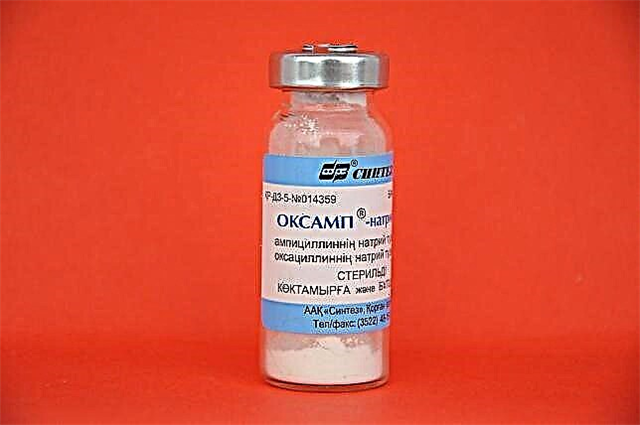
Choosing a medicine with an expectorant effect, in most cases, they stop at syrups. One of them is Jocet. Is this medicine prescribed for children, when it helps, and how do parents respond to this medicine?

Release form
The syrup is a sweet, thick orange liquid. The bottle of this drug can be made from either brown thermoplastic or orange glass. One bottle contains 100 ml of syrup. The bottle is placed in a cardboard box along with a measuring cup containing 15 ml of medication.
Composition
There are several active substances in Jocet syrup, thanks to which the drug has a therapeutic effect:
- Salbutamol (in the form of sulfate). The amount of this ingredient per 5 ml of syrup is 1 mg.
- Bromhexine (in the form of hydrochloride). In 5 milliliters of medicine, it contains 2 mg.
- Guaifenesin... The dosage of this component per 5 ml is 50 mg.
- Menthol (in the form of levomenthol). Such an ingredient is represented by a dose of 0.5 mg per 5 ml of medication.
Additionally, the preparation includes water, methyl- and propyl sodium para-hydroxy-benzoate, citric acid, sorbic acid, glycerol and propylene glycol. The color and taste of the syrup are due to the presence of sodium saccharinate, sunset yellow dye, sorbitol and sucrose in its composition.

Operating principle
The components present in the composition provide expectorant effect... They also celebrate mucolytic and bronchodilator effect.
- Salbutamol promotes the expansion of the bronchi by stimulating beta-2 adrenergic receptors, due to which bronchospasm is eliminated or prevented.
- Thanks to bromhexine, the drug affects the mucopolysaccharides in the bronchial secretion (destroys the bonds in them) and stimulates the work of secretory cells. The result of this influence will be reducing the viscosity of sputum and improving its coughing.
- Guaifenesin also affects the sputum (its adhesive properties), therefore, under the influence of this component the viscosity of the secretion decreases, and its removal from the respiratory tract is facilitated.
- Menthol has antispasmodic and antiseptic effects. Such an ingredient soothes the mucous membrane and relieves its irritation, and also gently activates the work of the bronchial glands.
Indications
Jocet is taken for a dry cough, which may be caused by:
- Pneumonia.
- Chronical bronchitis.
- Chronic pulmonary pathology with obstruction.
- Tracheobronchitis.
- Bronchial asthma.
- Pneumoconiosis.
- Emphysema.
- Tuberculous lung disease.
A video review of the drug can be viewed below:
From what age is it allowed to take?
The instruction for the syrup does not contain information on age restrictions for use. However, the use of such a medication in children under six years of age is best coordinated with the pediatrician observing the baby from birth to make sure that there are no contraindications and there are grounds for treatment with this syrup.
Contraindications
This cough syrup is not recommended for:
- Hypersensitivity to any of the components of such a drug.
- Myocarditis.
- Renal failure.
- Diabetes mellitus in the stage of decompensation.
- Tachyarrhythmias.
- Glaucoma.
- Hepatic pathologies.
- Exacerbation of peptic ulcer.
- Aortic stenosis.
- Thyrotoxicosis.
- Gastric bleeding.

Caution in the use of such a medicine is required by children with high blood pressure and compensated diabetes mellitus, as well as young patients with a peptic ulcer diagnosed in the past.
Side effects
- The child's nervous system may react to taking the drug with dizziness, disturbed sleep, tremors, headache, nervous irritability or drowsiness. In rare cases, the drug provokes seizures.
- The children's digestive system, when treated with Jocet, sometimes "responds" with diarrhea, nausea, or bouts of vomiting. Occasionally, the drug causes an exacerbation of peptic ulcer disease or increases the activity of liver enzymes.
- In some children, the drug provokes an increase in heart rate and a decrease in blood pressure.
- Treatment with this medication can cause allergies such as urticaria, skin rash, or paradoxical bronchospasm.
- The urine of a child taking the drug may turn pink. This is due to the presence of guaifenesin in the preparation and is not dangerous.

Instructions for use and dosage
Joset is recommended to be taken orally three times a day at this dose:
- A child under 6 years of age is prescribed 5 ml of the drug per dose.
- A child 6-12 years old is prescribed at one time from 5 to 10 ml of syrup.
- A child over 12 years old is prescribed to drink 10 ml of medicine per appointment.
In this case, the syrup should not be washed down with any alkaline liquids. If a small patient wants to drink medicine, it is best to use plain water.


Overdose
A very high dose of syrup, for example, if a small child accidentally drank a large amount of it, leads to tachycardia, vomiting, drowsiness or increased excitability, collapse, loose stools, dizziness and other negative symptoms. It is recommended to treat an overdose symptomatically.
Interaction with other drugs
- If the drug is prescribed together with theophylline or other xanthines, it will increase the risk of tachyarrhythmias. The same effect is observed from the combination of the drug with beta-2-adrenostimulating drugs.
- With the simultaneous treatment with Jocet and tricyclic antidepressants or MAO inhibitors, the effect of salbutamol in the syrup will increase, which can dramatically lower blood pressure.
- Prescribing together with glucocorticoids or diuretics provokes hypokalemia.
- If you give Jocet to a child along with codeine or other antitussive drugs, it will become an obstacle to the removal of liquid secretions from the bronchi.
- Due to the presence of bromhexine in the syrup, the simultaneous prescription of antibiotics for microbial damage to the lungs will improve the penetration of such drugs into the lung tissue.
- The drug should not be given to patients together with any non-selective adrenergic blockers that affect beta-receptors.

Terms of sale
To buy a drug, you need to have a doctor's prescription with you... In pharmacies, the price of 100 ml of Jocet varies from 180 to 220 rubles.
Storage conditions and shelf life
You need to keep the product at home in a place hidden from children at a temperature of no more than +30 degrees Celsius. The syrup has a shelf life of 3 years from the date of issue.
Reviews
There are different reviews about the drug. Some parents praise this syrup for its effective cough action, reasonable price and good taste. They confirm that Jocet quickly eliminates cough in the very first days of use and accelerates recovery from bronchopulmonary pathologies.
However, there are also negative opinions in which mothers complain about side effects. (allergy or negative reaction from the digestive tract) and lack of therapeutic action. Also, some parents consider this syrup too sweet or note a very rapid consumption of the medication.


Analogs
Instead of Joset, you can take medicines with the same composition - Kashnol and Ascoril. Kashnol is made in the form of a syrup, which is a red raspberry liquid. This drug is packaged in bottles of 100 ml and 200 ml.
Ascoril It is produced in white tablets and in syrup (it is called Ascoril Expectorant), which is 100 or 200 ml in one bottle. These medicines have the same properties. They have similar indications and side effects.


In addition, children are prescribed for cough herbal preparations (Bronchipret, Doctor Mom, Prospan, Licorice syrup, Gedelix), drugs based on carbocisteine (Bronchobos, Fluditec), ambroxol preparations (Ambrobene, Flavamed, AmbroGEXAL, Lazolvan) and other medications. Wherein the choice of a suitable analogue is recommended to be carried out together with a pediatrician, since only a doctor observing the child can determine what is best for the child with a dry or wet cough.

Surely you will be interested in watching a video in which the famous doctor Komarovsky, who is trusted by thousands of mothers, talks about the features of cough treatment in children:



